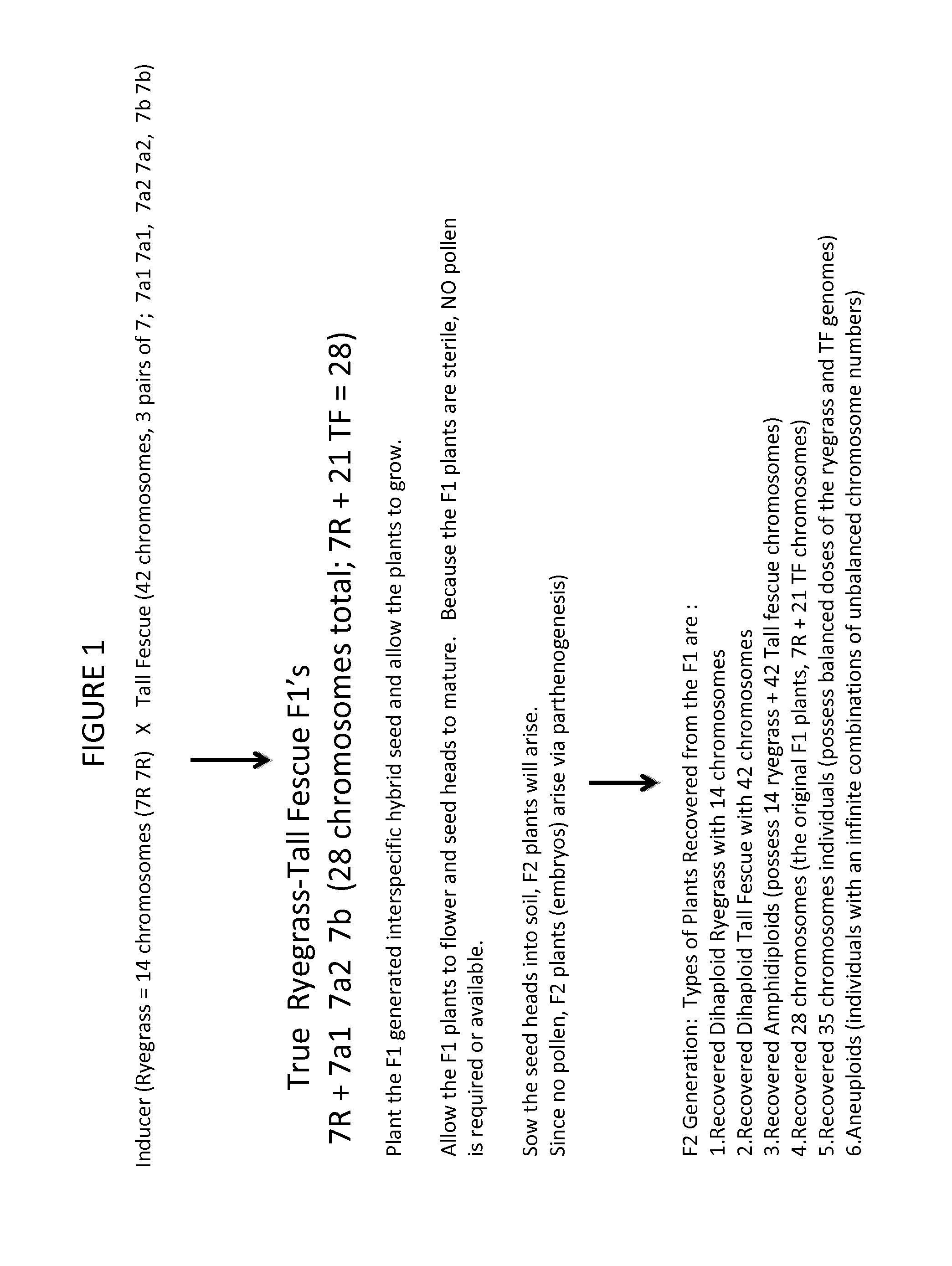Lolium Multiflorum Line Inducing Genome Loss
a technology of lolium multiflorum and genome loss, which is applied in the field of diploid lolium multiflorum lines, can solve the problems of time-consuming, labor-intensive, unpredictable,
- Summary
- Abstract
- Description
- Claims
- Application Information
AI Technical Summary
Benefits of technology
Problems solved by technology
Method used
Image
Examples
example 1
[0029]Dihaploid Tall Fescue plants were produced using the process of the invention and examined to confirm that they were homozygous / inbred lines.
[0030]In brief, the L. multiflorum inducer line IL-1 was crossed as the maternal parent with Tall Fescue, F. arundinaceae, as the paternal parent (pollen source) grown in a greenhouse. F1 interspecific hybrid seed is collected and planted into individual pots, and the F1 plants were allowed to grow, mature, and flower. After the panicle or seed heads matured, the seed heads were collected, gently ground, and sown in fresh potting soil. F2 plants were allowed to grow and plants appearing as normal Fescue by their broad leaves were examined and confirmed to be dihaploid Tall Fescue, containing 42 Fescue chromosomes with no Lolium chromosomes. Four of the dihaploid Fescue plants were retained for further analysis.
[0031]The four retained dihaploid Fescue plants were each selfed, and the seed was collected, planted, and allowed to grow. The of...
PUM
 Login to View More
Login to View More Abstract
Description
Claims
Application Information
 Login to View More
Login to View More - R&D
- Intellectual Property
- Life Sciences
- Materials
- Tech Scout
- Unparalleled Data Quality
- Higher Quality Content
- 60% Fewer Hallucinations
Browse by: Latest US Patents, China's latest patents, Technical Efficacy Thesaurus, Application Domain, Technology Topic, Popular Technical Reports.
© 2025 PatSnap. All rights reserved.Legal|Privacy policy|Modern Slavery Act Transparency Statement|Sitemap|About US| Contact US: help@patsnap.com


